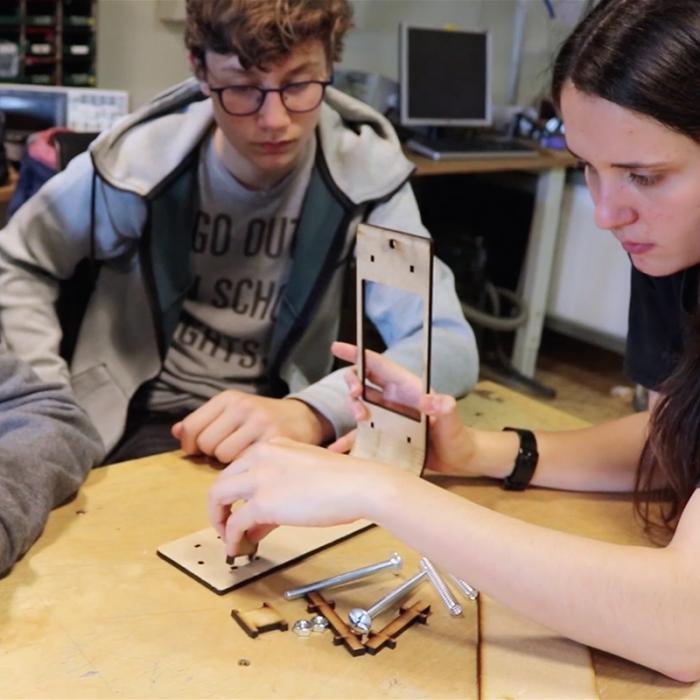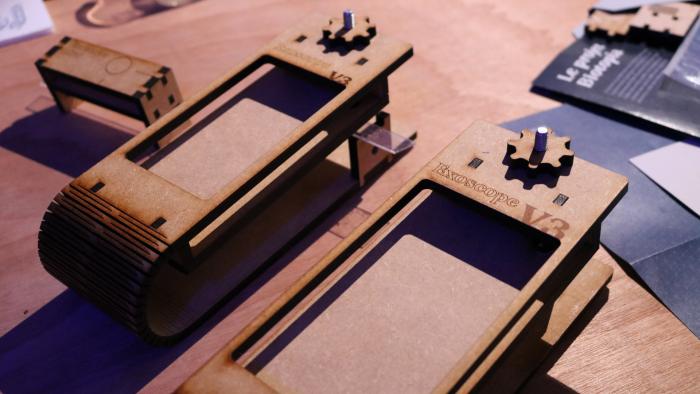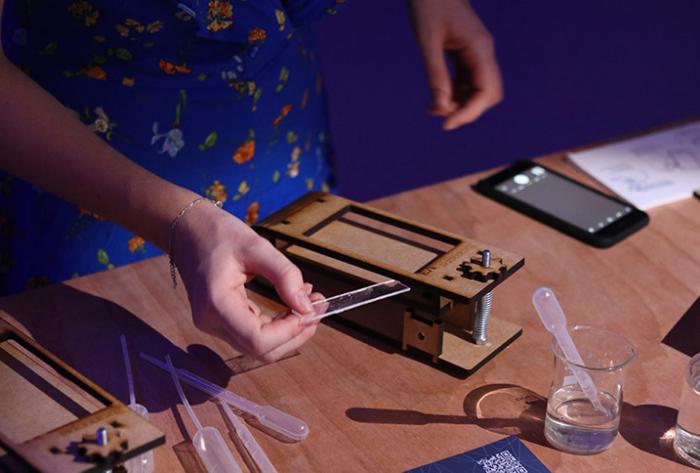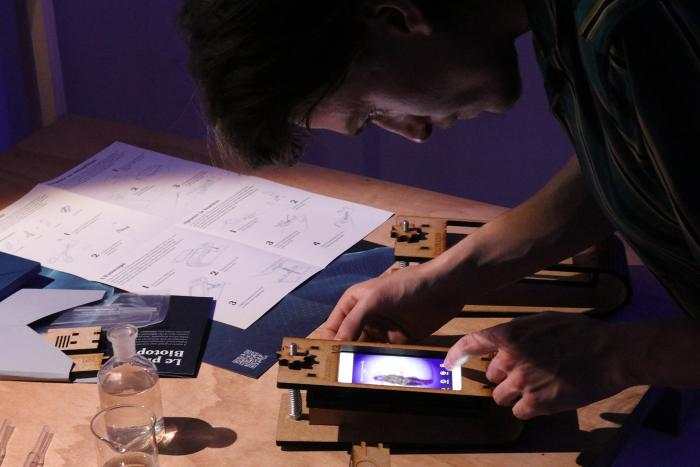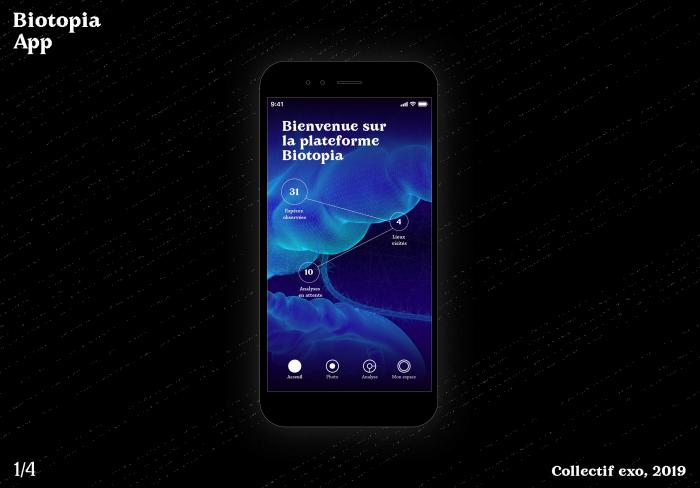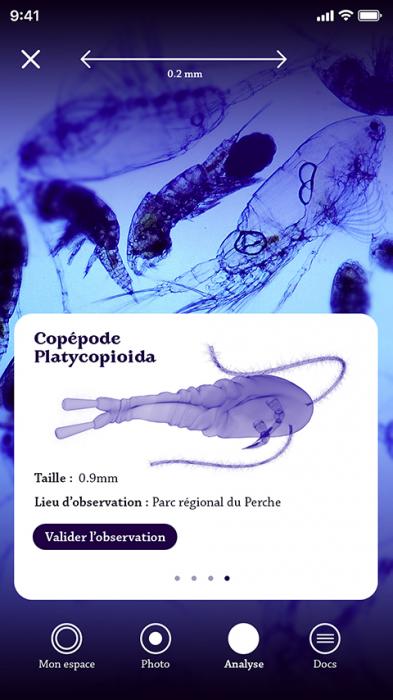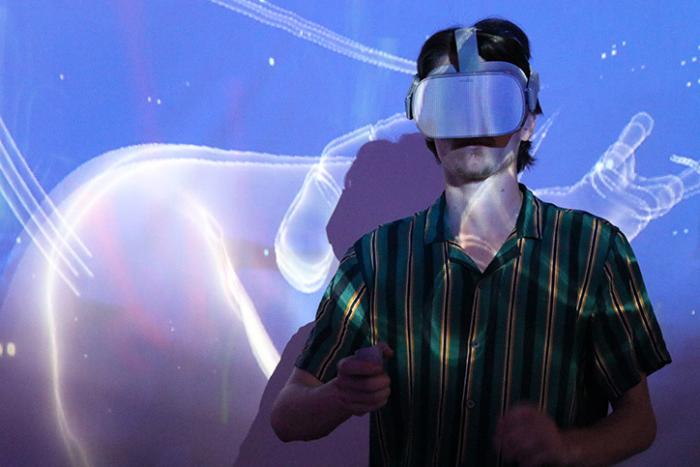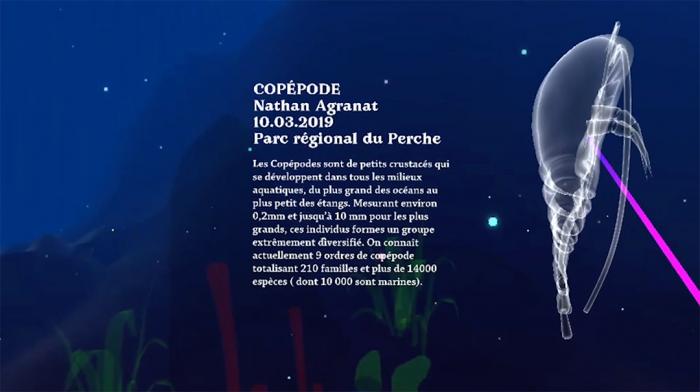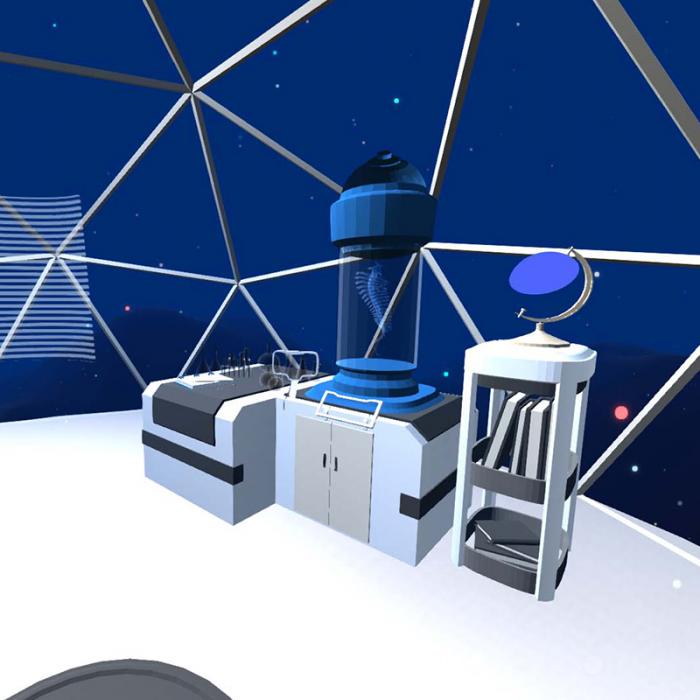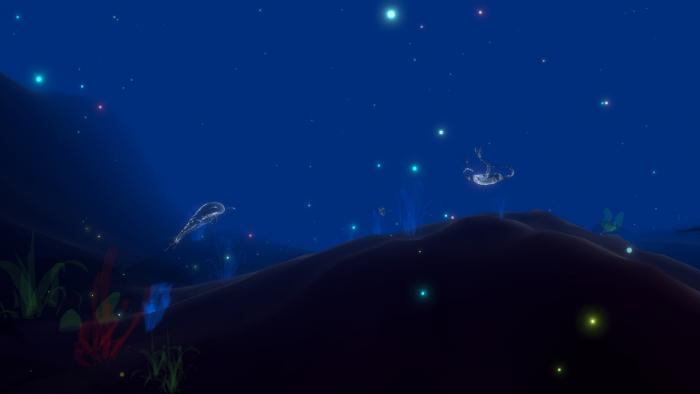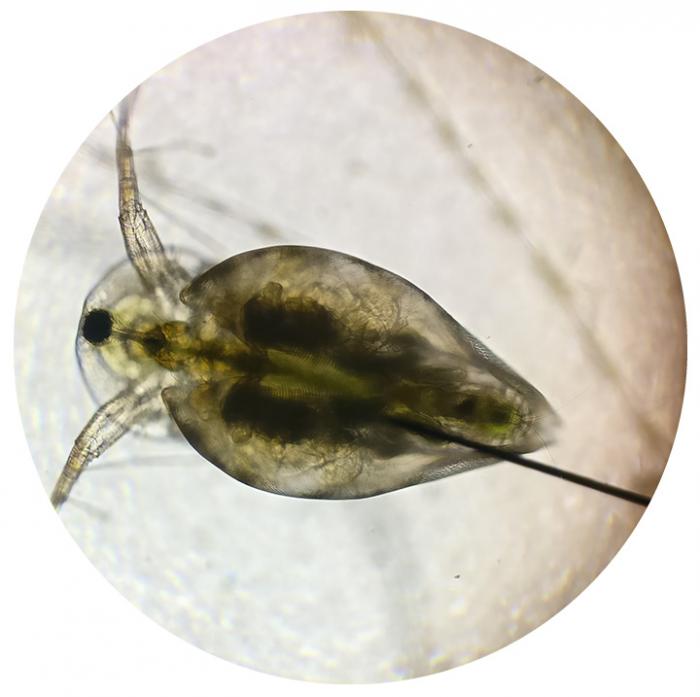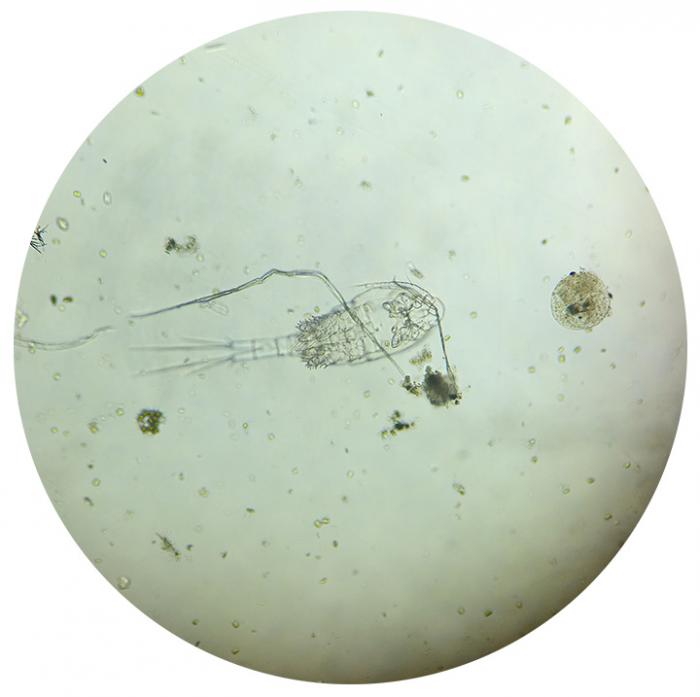I. SUMMARY INFORMATION
Project
267881
Status
Submitted
Award category
Interdisciplinary education models
You want to submit
NEW EUROPEAN BAUHAUS RISING STARS : concepts or ideas submitted by young talents (aged 30 or less)
Project title
Biotopia
Full concept/idea title
Biotopia invites the public to participate in a collaborative science program around plankton.
Description
Few of us are familiar with plankton, yet they are an essential part of our ecosystem. The BIOTOPIA project of design allows the public to use digital devices as a means of contributing to scientific research and raising awareness about plankton. Our project of design offers a complete experience in three main stages: Making your own plankton observation kit called the Exoscope, using a web app to analyze plankton and finally an immersive database in virtual reality.
Where is your concept/idea being developed or intended to be implemented in the EU?
France
Île-de-France
18 boulevard Auguste-Blanqui
Paris
75013
II. DESCRIPTION OF THE PROJECT
Please provide a summary of your concept/ idea
We are the EXO collective, made up of Nathan Agranat, Solène Lombard and Sylvie Nguyen. We are designers who worked for the service of science and we would like to promote that to the public. We are part of the process of involving citizens in scientific research through collaborative science, and providing them some knowledge. We are interested in the idea of the play and interactive design applied to collaborative science.
The Biotopia project allows the public to use digital devices as a means of contributing to scientific research and raising awareness about plankton. Our project offers a complete experience in three main stages. The first phase proposes to the participants to make their own plankton harvesting and observation kit, adapted to their smartphone in workshops, or with the help of freely available plans. We have called this tool the "Exoscope".
Then, with the help of a web app, the participants will be guided in the analysis of the collected samples and thus feed a common virtual plankton space. Finally, once this observation is completed, the public has access to an immersive space that offers the possibility of wandering through a living database. This database is fed in real time by all participants. It also brings together the community of users and scientists, functioning as a place for meetings and exchanges.
Please give information about the key objectives of your concept/idea in terms of sustainability and how these would be met
Plankton are lives that derive from the fact that they cannot move by themselves, and let themselves be carried by the currents. Plankton is the origin of life on Earth and is present in all aquatic environments: the sea, rivers, lakes, ponds, brackish water and even in small puddles. Even if it is increasingly studied, the mysteries around these microorganisms reside in the fact that a large part of the planktonic diversity is still unexplored. It is with the aim of making these small invisible beings visible that we have conceived the Biotopia project.
Working on planktonic species was obvious to us following numerous meetings and more particularly with Flora Vincent, scientist specialized in marine microbiology. Our objectives are focused on public engagement, education, and awareness around plankton.
We turned to collaborative science because these programs can be very effective in meeting these different objectives. They allow to gather a large community that shares their research and knowledge. Moreover, our objectives are focused on environmental, accessible and sustainable solutions. To raise awareness about these notions, we have chosen to use low-tech mediums and to design some steps of the project in a fab-lab. Our Exoscope must therefore be made with non-rare and preferably natural materials, to be easily repairable and recyclable. This sustainable innovation allows us to explore new alternatives to high-tech products.
We have organized workshops in collaborative creation spaces such as fablabs to encourage citizens' creativity and the discovery of DIY. They are part of the sustainable development movement and offer a new vision of how to design a product. These workshops, open to all, facilitate citizen innovation and encourage experimentation, learning and sharing of know-how.
Please give information about the key objectives of your concept/idea in terms of aesthetics and quality of experience beyond functionality and how these would be met
The aesthetics of the first step of our project, the Exoscope, is mainly guided by technical constraints: those of allowing users to create their own observation tool with a limited cost. This induced the use of "mdf" as material, making the object very identifiable as coming out of a Fablab. This aesthetics of Fablab's objects also makes people want to make their own Exoscope. Allowing users to customize their object also contributes to their aesthetic experience. They have a base but can decide what theirs will look like, they can paint it, add stickers, the aesthetic is not fixed.
As for the web app that accompanies the Exoscope, we played with the traditional codes of mobile applications so that our users would not be unnecessarily lost. The design is simple and intuitive to make the experience accessible to all. The user is guided through several steps of analysis to identify the plankton he has collected. The goal is to offer a playful experience that allows learning while helping scientific research. Bringing this concept of gamification seemed important to us because we noticed that the best collaborative science projects clearly took advantage of it to create fidelity among their users. This desire is even more concrete in the virtual reality planktonic space.
From the start, we wanted to immerse the viewer in a planktonic universe at human height. Virtual reality seemed to us to be a good solution to reach this goal. We wanted to take the user on a journey in search of plankton. Each aquatic space has its own dedicated area and will grow as it fills up thanks to the community. Each world is color coded to differentiate them. Using a transparent shader, we were able to harmonize the plankton with their environment but also to reveal the internal structure of their organism to learn more about them.
Please give information about the key objectives of your concept/idea in terms of inclusion and how these would be been met
Our collective of designers is committed to science and its promotion to the public at large and is united around several ideas: science accessible to all, co-creation and collaboration. From our point of view, what is at the heart of a successful collaborative science program is the engagement that can be created in people and the motivations that drive them to continue to get involved in the program. Inclusion is therefore a key aspect that we wanted to emphasize throughout our project.
Through workshops open to all organized at the Carrefour Numérique in the Cité des Sciences (Paris, France), we had the opportunity to experiment our prototypes in front of the public and we were able to collect opinions and desires. Desires of learning around the plankton, by the curiosity which they generate at their first meeting, opinions related to the functionalities which could offer our tool of observation. We accompanied the public in the making and the use of the tool and initiated them to the methodologies of Fablab. The public takes full part in the project throughout the process from conception to creation. From all this, an object emerged, the Exoscope, which is simple and accessible, both economically and technically.The tools we propose are of course editable and modifiable by the participants, each one being able to decide to improve and personalize it. In addition to this Exoscope, the public will leave with a complete kit to observe plankton, which they will use to analyze the plankton with the WebApp.
Our project wants to be places of exchange and sharing, whether in our workshops of co-creation of the Exoscope, in the collection and analysis of plankton, or the virtual space, the community of users and scientists can exchange, learn together. The success of the project cannot be achieved without each other. Biotopia is therefore a good example of community engagement that allows the public to be engaged as citizen scientists, designers and activists.
Please explain the innovative character of your concept/ idea
Nowadays, the technical or technological barriers are less high than before. Everyone can, at its level, study the plankton. Born from the desire to push the participant to use digital tools as a means to contribute to scientific research and raise awareness around a common goal: planktonic species.
Our approach is part of a collaborative science project. Most of these programs are still too focused on collecting scientific data without giving back knowledge to users. With the possibilities of most smartphones, it’s possible to create different devices in the field of participatory science and thus renew its appeal. The idea is to start with an object that is within everyone's reach, since the goal is to get the maximum number of people to participate, while using it in a different way.
Our objective was to rethink this innovative model of collaborative science and to improve the experience of the public to involve them fully in scientific research, while providing them with real knowledge. They are actors of their learning, of scientific progress and co-creator of a common project.
We have chosen to use virtual reality as a simulation space to reinforce the collaboration between scientists and participants. Also, this could be a good pedagogical way to simulate the interaction of plankton. With this device, the objective is to maintain the desire and curiosity of the participants. The notion of gamification used in our virtual space is a way to go further in edutainment learning.
We are moving towards learning possibilities with digital technology that opens the way to new uses, including the notions of popularization and mediation, in order to initiate a more social science. Questioning emerging design methodologies that collaborative science takes advantage of to think about new social interactions.
Please detail the plans you have for the further development, promotion and/or implementation of your concept/idea, with a particular attention to the initiatives to be taken before May 2022
First, before the end of 2021, we would like to be able to link to the EcoTaxa web application, a platform dedicated to image annotation. It’s the largest database of sorted plankton images. We could work together and propose to introduce all the observations made by Biotopia users to simplify the plankton recognition system of EcoTaxa, and enrich the mapping of this database. Eventually, our project could be part of the context of this platform.
On the other hand, we are currently imagining new scenarios for VR. We would like to develop other modes in order to propose different experiences: games, real interactions between scientists and non-scientists, mode for scientists, experimentation laboratory.
Moreover, we would like to export our project to other fablabs, institutions and schools (internationally) to reach more and more people. Biotopia can be exported everywhere because it is possible to download the plans of the Exoscope and the documentations with the explanation of our project. We will also create a website for more visibility and communication around the project. This would also allow us to reinforce the link with the public by proposing a page dedicated to the data collection, to the progress of the project, and for everyone to propose new ideas or desires.
Finally, we continue to participate in events like Museomix - France, Hacking de l'Hôtel de Ville de Paris - France, Wanted Design - U.S.A, to present our project and meet new people who could collaborate with us. The goal would be to work with engineers and scientists to develop the application, improve the Exoscope and the plankton analysis stage. For us, it is essential to work with passionate people coming from different fields to share our knowledge in order to propose to the public an innovative and enriching experience and to allow, in the long term, a scientific advance thanks to the participation of everyone!
III. UPLOAD PICTURES
IV. VALIDATION
By ticking this box, you declare that all the information provided in this form is factually correct, that the proposed concept/idea has not been proposed for the New European Bauhaus Rising Stars Awards more than once in the same category.
Yes
